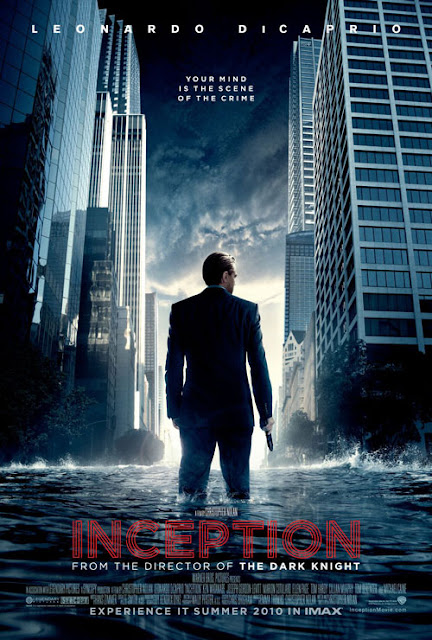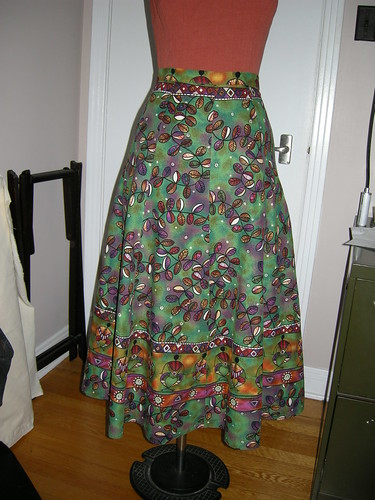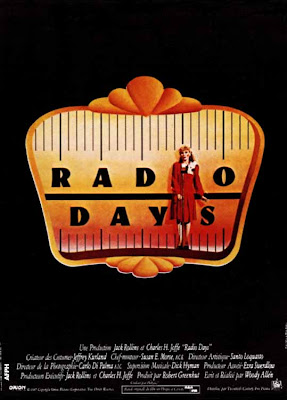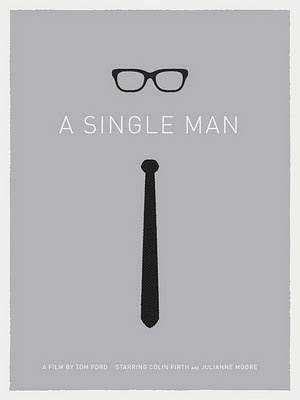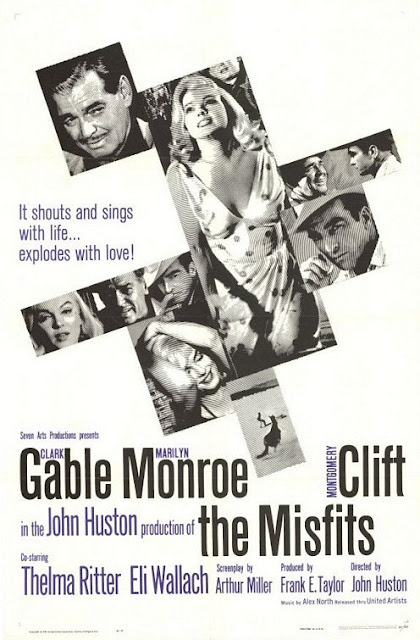Thursday, July 29, 2010
Inception (2010) Directed by Christopher Nolan
I am an avid dreamer. I remember fragments of my dreams every morning. Sometimes I know during the dream that I am dreaming, but I tell myself: lets watch this one more, it's fun. My dreams are always populated by people I know, situations close to my awake reality. It has happened that events in dreams influence how I perceive others or what I think has happened with them. Distinction between dream and reality has blurred.
Despite Inception being cinematically rather uninventive, I was fascinated by the concept of theft while dreaming. To elevate the human sleeping and dreaming state into an important maker of our conscious reality is an inspiring idea, it makes Inception watchable for me.
Unfortunately, Inception was also an over-long, cold and cynical action blockbuster. It's full of the kinds of gestures and repetitions that usually annoy and bore me (stiff character development, clichéd motivations for actions and too much violence). I found Nolan's previous film The Dark Knight tedious and angering in its negativity towards humanity, some of that same general grayness is present here too.
Although the subject matter of controlled dreaming was the essence of this film, some of the ideas presented during it were a little too simplistic: for example the notion that incepting an idea into a person's mind in their sleep (or when they are not conscious of it) is difficult. This claim seems a bit laborious and forced, when we know that the 20th century was defined by a constant stream of incepting ideas into conscious and awake people's heads through advertising. It isn't that difficult, so just stop sleepwalking Leo!
Nick:
I've always been envious of people who can remember their dreams. For me the nights' sleep is always nothing more than a feeling of what I dreamt about. Something may come back to me during the morning but generally I don't remember any dreams. Then I hear people go into long details about their dreams. It sounds like having access to another world. Of this I'm envious. I'll just have to hang on to my waking dreams.
Nolan's picture deals with the premise of accessing people's minds through their dreams so that important information can be garnered. Its kind of like a heist concept, stealing people's secrets from their subconscious. The picture is loaded with effect heavy scenes. Buildings crumble, cities are built instantly, roads turn upside down, people walk on ceilings. This is fine for awhile (and certainly you feel the effects on the big screen), but the trick is repeated constantly through out the film, so you feel a little worn down by the CGI. Still, some scenes are impressive, even if you have seen a lot of the imagery in other movies (The Matrix, Kubrick pictures etc).
But Leonardo DiCaprio as the (anti) hero Cobb is a little flabby. Maybe he saves his best work for Scorsese. You don't really emphasize with Cobb in the way that you would even cheer Nolan's resurrected, dark Batman. Inception is also overlong, has Nolan forgotten how to edit? This film was quite boring at times, dull even. Interest could have been held if we'd got a real examination of dreaming and it's effects on our subconscious. A film about alternative dream like states running parallel with our waking states would have been interesting. This is not that film.
Despite lots of faults, Inception does entertain as well. Just don't expect anything too deep. Along side the sometimes Bond-like action this picture has a sentimental streak. Taking into account Nolan's past work, this is a disappointment. Finally, the concept of Inception is often more impressive than the actual results of the film itself. A great, weightier picture awaits on this subject. Has someone got David Lynch's number?
Tuesday, July 27, 2010
Panama Attorneys Advise Offshore Hedge Fund
Panama City, Panama ---- Attorneys Lombardi Aguilar Group (http://www.laglex.com/) advised a group of European investors to file before the National Securities Commission (http://www.conaval.gob.pa/ - CONAVAL) of Panama a notice of compliance with private investment fund provisions. CONAVAL is the local securities regulator.
Following the local Panama securities laws, the Fund is professionally-managed by another company incorporated in the Republic of Panama which has in place proper risk management, monitoring and internal control procedures. Such risk management process enables the management company to monitor and measure, at any time, the exposure of the investment positions and their contribution to the overall risk profile of the fund portfolio. The Panamanian regulators will require the Management Company to certify in each annual report of the Fund that the procedures and controls for monitoring the management and risk of the Fund are still in place as defined in the Prospectus filed with the Commission.
Lombardi Aguilar Group is comprised of Lombardi Aguilar & Garcia and other professionals. The Group was created as an alternative for clients worldwide who seek fast, innovative and effective solutions to their legal problems. The firm currently provides services to individual and corporate clients in Panama as well in the Americas, Europe and Asia. Its partners maintain a commitment with professional ethics and social responsibility by participating in the board of directors of groups such as the Panama Bar Association, the Alliance Francaise, the German and the American Chambers of Commerce (AMCHAM) of Panama, and the Association of Chinese-Panamanian Professionals (APROCHIPA).
Monday, July 26, 2010
What to do with a border print
There are so many lovely border prints out there; and seemingly so few patterns that suit them. Conventional wisdom says you need straight lines which would seem to eliminate many interesting designs such as flared skirts and shaped blouses. Wrong!! Here are two projects to illustrate.
First, my laundry for today. Some years back, I used a cotton print with 2 different borders to make a shapely 8-gored flared skirt and matching shirt with front and back yokes and princess seaming.
The print featured quirky vines through the middle of the fabric, and a border at each selvedge with stylized figures and narrower design bands at the top and bottom of the figures. I cut my 8 gores using the full band at the bottom, and it so happened that I could use one of the narrow bands at the top of the skirt pieces. Obviously this meant I had to cut the pieces "sideways" on the cross grain. If I recall, the border was the same at both sides, so I could place the triangular pattern pieces very economically using both edges.
 Here's a close up of the hem. You can see one seam in about the middle of the picture - I tried as much as possible to cut so that the figures would not be chopped up by the seams. While each pattern piece has a slight curve at the hem and the border is (more or less) straight, the overall effect is a printed border that tracks the curving hem line perfectly.
Here's a close up of the hem. You can see one seam in about the middle of the picture - I tried as much as possible to cut so that the figures would not be chopped up by the seams. While each pattern piece has a slight curve at the hem and the border is (more or less) straight, the overall effect is a printed border that tracks the curving hem line perfectly. What about the shirt? I used a Burda magazine pattern from the late 1990s (I think). It features a front and back yoke (front is slightly angled down from the armscye to CF), princess seams, and a collar with lapel.
 As you can see, I cut the yoke pieces so that the border tracks the yoke edge. This meant I had to ignore the grain line on the pattern pieces. It is possible to do this without causing the world to come to an end! I did the same in the back, but could respect the straight grain for the back yoke, which is horizontal.
As you can see, I cut the yoke pieces so that the border tracks the yoke edge. This meant I had to ignore the grain line on the pattern pieces. It is possible to do this without causing the world to come to an end! I did the same in the back, but could respect the straight grain for the back yoke, which is horizontal. Here's another project using a border print in an interesting way. I was lucky enough to have a silk sari which had two different border prints - a wide one at one selvedge (meant to be the hem) and a narrow one at the other. I used a Vogue pattern (8193, now OOP) which features large puffed sleeves and a triangular shawl collar.
I used the wide border for the sleeves and the narrow border at the CF and collar edges, and for the sleeve cuffs. Again, this meant I had to selectively ignore the grain lines on the pattern pieces (especially for the upper collar - I also had to create a CB seam).
The sleeves involved a little trick - the lower edge of the pattern piece is not perfectly straight but the selvedge is. I started by laying the piece on the fabric (cross-grain) so that the bottom of the curve included the entire border. I then cut the piece except at the lower edge where I wanted to preserve the border and selvedge. To create approximately the right curve, I took a long, narrow dart parallel to the selvedge, between the lower edge of the border and the leafy design as you can see in the next (sideways) picture... or can you?

The only hint is that the lower edge of the leafy design is being swallowed up a little bit by the red border, near the under-arm seams. Once I had sewn and gathered the sleeves, this was completely invisible. On the other hand, if I had cut the curved lower edge, the drooping border might have been visibly distracting.
These fudging, fast-and-loose techniques might not work for all border prints or all fabrics. Darting the blouse sleeve worked very well with my thin silk fabric - as you can see, the dart pressed perfectly flat (although a slight shaping would have been unnoticeable). Also, both my prints were quite "freehand" - the lack of precise geometrics in both prints meant that the slightly approximate matching and shaping wasn't fighting with the aesthetic of the print.
Here's hoping this may inspire you to think outside the box with those border prints that you love but can't figure out how to use...
Radio Days (1987) & Without Love (1945)
Nick:
It's almost impossible to imagine not having my computer, I-pod, mobile phone and all the other gadgets that make the flow of information and entertainment so essential to modern life. When I was a child, I don't think we got a TV until I was 4 years old, and ironically my first TV memory was a re-run of England winning the World Cup from 1966. Radio would feature heavily in my youth, it was always on in our house during the day. By the age of 13, I was addicted to the John Peel show which would run from 10pm every Monday to Thursday. This would have a profound influence on my life. Unlike TV, Radio was something for the imagination.
Woody Allen's underrated Radio Days is his loving tribute to the airwaves. The main drive of the film are his youthful reminisces when the Radio in mid-40's America was the main medium for people's news, entertainment and a world within your living room. Through various anecdotes narrated by Allen himself, Allen regulars such as Mia Farrow, Diane Keaton, Julie Kavner and Diane Wiest bring Allen's childhood to life. Period detail is inspiring and the humor gentle. This is Allen pining for a time that has passed.
In one scene in Radio Days, Allen's youthful re-incarnation visits the cinema at New York's Radio City Music Hall. The film they watch is The Philadelphia Story. This brings us to another Katherine Hepburn picture Without Love. One of the classic Spencer Tracy/Katherine Hepburn team ups, this is maybe the most eccentric. Set in the same time as Radio Days, 1944-45, Without Love is the kind of feisty comedy full of in jokes and sexual innuendo that is refreshing and throws light on the fact that this kind of romantic comedy seems to be beyond our reach nowadays.
Yes, it's that thing called chemistry, Hepburn and Tracy have tons of it. Great support from Lucille Ball as a sexy estate agent, Without Love bristles with style. Special mention must go to Donald Ogden Stewart (who would later work on Allen's Love & Death), one of the great screenwriters of the day, this man is sharp.
Weather it's the loss of love in marriage or the loss of the radio as a medium of choice, both these pictures reflect a time when all possibilities were go and imaginations were allowed to prosper and dream.
Astrid:
Without Love from 1945 and Radio Days from the 1980s (which depicts the 1940s in New York) share a central theme: marriage as a practical and beneficial deal without romantic love. Romance is something that belongs in movies, dreams, the past or the future. The present tends to be the least romantic.
Radio Days depicts a lower middle class family to whom romance is a distant Manhattan thing. These people know that love smells of fish, sweat, old perfume and home cooking; it tastes of bad breath, looks pudgy and disheveled and sounds like muffled knocks while the radio is on all night. Katharine Hepburn's tilted kissable cheek appears on a cinema screen in Radio Days – but then, she always appears doubtful about commitment.
In Without Love Hepburn plays a widow who has decided to forget about love and look for partnership instead, because as a young woman she already had that perfect romantic love. She can afford to play games though, these people are rich, exclusive and have some of the best lines in cinema. In my opinion not succumbing to romantic love with her husband (Spencer Tracy) can be interpreted as movie-long foreplay. The audience needs to see the slightly eccentric upper class movie stars yet again turn from reserved to passionate.
This is called playing games and Aunt Bea (Dianne Wiest) from Radio Days simply cannot afford it or she'll wind up alone for the rest of her life.
Sunday, July 25, 2010
Planning for fall
The colour is blue - a greyish but still blue blue. I purchased the cashmere blend in Toronto at the Wool House on Queen Street West (highly recommended, if you're in Toronto) and the coordinating fabric in Montreal at PR Weekend at Couture Elle (highly recommended, if you're in Montreal). I gave my little swatch of the Toronto wool to the guy in Montreal and asked him to recommend a coordinating fabric (finding coordinating jacket fabric for 2 dress lengths was another of my shopping goals for the weekend). He strode decisively to a high stack of bolts, pulled one out, placed the swatch on top and ... TA DA! Perfect, first time. This guy is amazing.
Thursday, July 22, 2010
A Fistful Of Dollars (1964) & Ride With The Devil (1999)
Astrid:
This may be an unfair comparison, but there it is in the above pictures. Toby Maguire's eyes gazing to our left outside of the picture – generally cosidered a feminizing pose. Compare to Clint Eastwood's stare coming straight at us. I may not even see his eyes, but I feel his attention anyway. Then there are the hats and the question of what happens to your hair underneath.
What confirms Clint's victory is the poncho. Seconds into watching A Fistful Of Dollars I say to Nick:
I need a poncho. Right then Clint walks into the picture (or did he ride?) covered in that perfect multi-tasking garment. (The Drunk Lovers may have looked more like the guys in Ride With The Devil on the last tour, but on the next one they'll all wear ponchos.)
Nick:
Two contrasting experiences from the same genre. A Fistful Of Dollars is a film I've watched probably over 30 times. It was a favorite of my fathers, and I do recall as a pre-teen watching this film with him. It's possible that The Man With No Name (Clint Eastwood), is a perfect reflection of Italian masculinity as some commentators have suggested to gauge the initial impact of the Dollars movies in Italy and subsequently everywhere else. Or could it be that Director Sergio Leone showed us the first glimpse of how the Western genre could be revitalized with a heady stew of Morricone's exciting music, over the top violence and the cool iconoclast of Eastwood's loner. Still essential, Peckinpah took note, Tarantino copied badly.
Ang Lee's Ride With The Devil gives us a sure sign why this genre has not stood up going into the new century. His Civil War picture is such a mess. It reeks of studio tampering, the look is straight from Laura Ashley, the main protagonists seem to have been transported in from grunge-era Seattle. It takes an earth to actually work out what is going on. Jeffrey Wright holds the interest here as the confused Holt, his performance is worth a look. Otherwise, Lee has got this so wrong. A mention for Tobey Maguire's usual bland performance which is only matched by Jewel's vacuous presence. This film is one to avoid, and a surprise given Lee's other work.
We watched Lee's movie first, and struggled to finish it. Faith in my favorite genre was restored from the first frame of Leone's picture. Yes, A Fistful Of Dollars has been much parodied and copied, but go back to the original source. It still holds the attention and it still thrills.
More stretchiness
 The shirt is one of 2 I’ve completed (a third is cut out) which combines a very stretchy mesh for the dark grey side panels and under sleeve, with a polyester athletic knit purchased some time ago from Wazoodle.
The shirt is one of 2 I’ve completed (a third is cut out) which combines a very stretchy mesh for the dark grey side panels and under sleeve, with a polyester athletic knit purchased some time ago from Wazoodle. Wednesday, July 21, 2010
Salvador (1986) Directed by Oliver Stone
Is the notion of subtlety something we gain with age? In our actions and in our observations even? I'm only thinking about this as my own notions of subtlety are often reflected in movies I saw when I was a young man and then in viewing the same films many years later. This can be my only reason for wanting to watch Oliver Stone's Salvador after all these years. I remember this film as being powerful and making a strong argument against American policy regarding El Salvador in the early 80's. Of course, we have also known Stone to be a director to use a hammer to crack a nut when a less aggressive stance may make the point more powerfully.
So after all these years, does Salvador stand up? Yes and no. The first half an hour of this film is juvenile, sexist, prurient and really not engaging. It's like a boys' own adventure shot through the viewfinder of Gonzo journalist stylization. James Woods is excellent as always in the role of seedy scumbag photo journalist Richard Boyle. After watching the extras to this film, it's clear that Woods hated the real life Boyle, his onscreen version really isn't so flattering.You gather that this was a difficult film to make for all involved. That is reflected on screen, this is a mess of a movie. Yet, once the politics start being discussed in preference to Boyle's own crude behavior, the picture regains some focus.
This picture follows the same route to other "political" films of the late 70's and early 80's such as The Killing Fields or to a lesser extent The Deer Hunter. What this means is reality is sacrificed in favor of plot devices. Of course, in Stone's case, everything is over the top. Stone obviously idolizes Boyle, so we forgive his faults as a human being in favor of the message of this film. This film is finally a damning indictment of American involvement with the military junta in El Salvador, something the Reagan administration was not so discreetly supporting with glee. I'm grateful Stone still makes political pictures, someone has to. He's still bombastic and still goes in with the hammer. He's never grown up. Being a juvenile in old age can sometimes be a good thing.
Astrid:
I have a prejudice against war journalists. Like hyenas they feast on other people's suffering and get their kicks from danger they were actually not submitted to until they took that last flight or some other vehicle to get there.
Salvador feeds my prejudice. From now on I can just refer to the film because it truly appears to be the bible for irresponsible war journalism. Unfortunately, it is also a weak cinematic experience with a pervasive ignorance about it.
Yes, I know, we need to know what goes on in conflict. But like Richard Boyle, the photo journalist, do we have to grown numb and unfeeling in front of the endless (news about) killing?
Forgetting about Salvador and the defensive idea that we have to lose our ability for empathy,
right now in war journalism there is Ghait Abdul-Ahad. He has photographed and written mostly for The Guardian in the recent years. He became a journalist because his hometown Baghdad was attacked and he needed to document what was happening. Go here to watch his reports and read his writing on Iraq when it was five years from the invasion.
If someone makes a movie about Ghait Abdul-Ahad one day, I hope it's not an Oliver Stone production.
Tuesday, July 20, 2010
A simple title, an impossible task
Another internal LNUK blog.
Today, according to the BBC, the Chancellor George Osborne (for some reason the BBC only uses a lower case c for Chancellor, something I decline to follow) has announced that he is setting up an "Office for Tax Simplification" (OTS).
One has some sympathy for the members of this new office, whom so far include amongst their number former Conservative MP and Treasury minister Michael Jack, as Chairman, and John Whiting, formerly of PricewaterhouseCoopers, who is tax director at the Chartered Institute of Taxation, as Director. Each has just been despatched to legislative drafting's equivalent of the Eastern front but, honourably, "neither will be paid".
We have been here before, of course. The Finance Bill of 1986 prompted much grumblings from solicitors and accountants due to its complexity. A decade later, with characteristically bland understatement, the Inland Revenue reported that the language of the existing law "could be simplified". The then Chancellor, Ken Clarke MP, had a go at this with a rewriting project. It began umpromisingly with Mr Clarke offering that the project was as ambitious as "translating War and Peace into lucid Swahili. He then admitted that that too was an understatement, since War and Peace was a quarter the length of the tax law as it then stood (1,500 pages for the Russian novel versus 6,000 pages for UK tax lawyers) and "hadn't been written by a Tolstoy". Former finance draftsman Francis Bennion later observed: "He might have added that neither is War and Peace a palimpsest of a thousand disconnected fragments from different years ..."
By 2001, following a change of government, the project had managed to come up with the Capital Allowances Bill, which weighed in at a mere 903 pages for just one area of tax law. Mr Jack was still an MP at the time and told the House he was pleased with the effort, though Mr John Redwood MP couldn't resist asking whether he thought Ken Clarke would have been happy with the outcome in the light of his introductory remarks in 1996.
On the reformers pressed and six years later we had the Income Tax Act 2007. One objective of this was to consolidate existing legislation and hence make it easier to find, though it was also hoped that it would be "easier to understand" - which is not the same thing. The Act amounted to almost 1,000 sections and in a depressing act of symmetry in the subsequent three years almost 1,000 amendments have been passed, leaving little of the original wording intact. I wonder if anyone's found anything easier as a result.
Ken Clarke, long thought politically extinct, is of course now back with us as Justice Minister, and so it would be a useful time to ask him Mr Redwood's question again. Given that we have gone from 6,000 pages in 1996 to 11,000 in 2010 we can probably assume he wouldn't have been happy in 1996 and isn't now. He along with the rest of us will be wishing Mr Osborne's simplifying office all the best in their endeavours, but unless the fundamental reason behind tax complexity is addressed their task is impossible, and will have the same outcome as all the other reforming efforts already mentioned.
That fundamental reason was expressed in one sentence by Mr Bennion in the article quoted above: "It is policy that produces complexity". The UK government has always used the tax system and always will not simply as a means to raise revenue but to try and engineer what it considers socially desirable outcomes. Hence in capital allowances it is forever trying to discriminate between different classes of assets. VAT law, too, is absolutely riddled with exemptions dating back to its introduction. All one can say is that they started as they meant to go on. This letter by a former Parliamentary Draftsman tells how the government of the day presented them with an absurd task by wanting an exemption for VAT for "the working man's fish and chips". The results of the effort to provide for such an exemption in a legally satisfying form are still with us today. Much later a similarly absurd complication was unleashed by Parliament when it decided that the other form of chip, that formerly known as crisps, were a bad thing, and therefore had to be exempted from a general exemption. This led to litigation over whether or not the well known Pringles product were actually potato crisps, and accordingly exempted, which in turn depended on whether Pringles were 'similar' to potato crisps 'and made from the potato' (for the record, they were, despite having less actual potato content than other crisps: see Procter & Gamble UK v Revenue and Customs Commrs [2009] EWCA Civ 407, [2009] All ER (D) 177 (May)).
When, therefore, not if, the OTS fails in its task, is it too much to hope that anyone will take heed of the fundamental problem?
Monday, July 19, 2010
Cases that changed our lives
Cases that Changed our Lives - Chapter Introductions
I. Public law
The first five cases in this chapter fall broadly within the category of separation of powers. That was not a phrase which would have been employed by those in Dr Bonham's time, although they were certainly familiar with territorial disputes between Parliament, the Monarchy and the Courts, and within half a century would take those disputes to the ultimate extreme of civil war. In the United States of America and Australia the presence of a written constitution gave rise to different outcomes, reflected in Marbury v Madison and the five Australian cases respectively.
In the years following the Second World War the landmark case of Wednesbury became the leading authority on one issue - the power of the courts to review executive action. It remains the leading authority on that point today, although since it was decided the role of the courts has been considerably altered by the United Kingdom’s accession to the European Union. Aside from the additional complexity of another legislative layer to consider, a fundamental shift in the constitutional balance was effected by Britain’s EU membership in the form of the supremacy of European law, as established by Factortame. The influence of European law will be seen again in several other chapters.
The trial of Dr Sacheverell concerns another key question in constitutional law, the relationship between the citizen and the state. This is an issue as old as the state itself and, as the essays on the right to life in Chapter V and on the state and terrorism in Chapter VI demonstrate, unsurprisingly remains one of the central legal questions of the present day. As to the people involved, there was more than a touch of irony in the champion of non-resistance becoming the icon of the mob, with Parliament eventually responding by way of “An act for preventing tumults and riotous assemblies, and for the more speedy and effectual punishing the rioters”.
The final two essays discuss race relations in the American and Australian contexts. It should not be too trite to observe that the United Kingdom played a key role in the development of both countries and that the ensuing legal issues should accordingly be of interest to British lawyers as well. No one in the present day would defend Plessy - a transparent and iniquitous attempt to justify inequality by little more than calling it something else - although the essay expresses the view that its ghost has not been entirely exorcised. Mabo has been a decision in the other direction: recognition of native title, which was controversial at the time but has become settled law since. As with many of the essays the lives of the people actually involved contain some interesting turns, since as Dr Lindgren QC observes Eddie Mabo himself was derided by some in his own community as a trouble maker and never lived to see the full effect of the legal proceedings for which his surname is now common shorthand.
II. Land law
The United Kingdom has one of the highest rates of private home ownership in the world, and the importance of land law to its citizens corresponds. That said, it is probably fair to assume that the majority of late-night revellers in Leicester Square remain unaware of the case of Tulk v Moxhay in 1848, which preserved that famous piece of land as a public square in perpetuity. Still less would they associate it with a key legal development regarding restrictive covenants.
Lord Denning became one of England's most famous judges partly through his desire to achieve justice notwithstanding apparently hide-bound legal rules, though he did not often admit to it openly. High Trees, decided when he was still a first instance judge, remains one of his best known decisions due to his fashioning a legal answer which provided justice as he saw it. Unlike some of his other attempts, however, rather than being distinguished in later cases, it became the bedrock authority for the now-commonplace doctrine of promissory estoppel.
III. Criminal law
The first two cases in this chapter are classics of law students' tutorials - the moral dilemma of the shipwrecked sailors, and the legal as opposed to medical definition of insanity.
One of the most striking aspects of the real-life tale of R v Dudley and Stephens is that one of the participating cannibalistic seamen wasn't so put off by the whole experience that he didn't repeat the voyage. As related in the essay, Dudley subsequently emigrated to Australia (where he met a more banal end of dying of the plague). But the issue of necessity is not confined to exotic facts from nineteenth century voyages: more recently the issue arose in the context of the tragic Siamese twin litigation (Re A (children) (conjoined twins: surgical separation) [2000] 4 All ER 961) and indeed in the well-known plight of trapped mountaineers recorded in the book and film Touching the Void (where one severed the rope connecting him to another in order to save his own life, though in the event both survived) albeit in that instance no litigation ever followed.
M'Naghten's case too has facts that are quite extraordinary. One way or another the wood turner turned would-be assassin was in possession of a large sum of money, quite inconsistent with his legitimate occupation. Was he paid to undertake "the hit"? If so, whoever made the payment did so before the attempt (or at least made a substantial down payment), and therefore had to have had considerable confidence not only in Mr M'Naghten's contract killer skills but also his propensity to keep to a legally unenforceable bargain.
The case of R v Morgan also contains an interesting factual angle, in that a man who initially pleaded guilty eventually had his conviction quashed. The tragedy of a fatal train crashes always gains the attention of the national press. Usually too the press demand recrimination and reform, though the task of apportioning liability is inevitably a complex and controversial legal task. As Morgan demonstrates, the knee-jerk reaction of blaming the “front line operator” such as the train driver may obscure more serious failings of a corporate nature.
IV. Civil law
No collection of “cases that changed our lives” could omit Donaghue v Stevenson, the most important single step in the law of negligence, something most people encounter almost every day in their relations with neighbours physical and otherwise. Caparo v Dickman is just one of the many significant cases which followed: the law of negligence has never showed signs of slowing its development since the epoch began with Donaghue. The number of times both cases are cited in the law reports each year indicates as much.
Mareva, another of Lord Denning’s famous decisions, today forms a substantial amount of the business of the Commercial Court. In practical terms securing the disputed assets prior to trial is of equal importance to any substantive legal right, for the obvious reason that any substantive legal cause of action may be rendered illusory by an elusive defendant dissipating his or her assets.
Anything approximating a new cause of action will also keep practitioners, judges and legal editors busy, and the developing law of privacy is no exception, as illustrated by the Campbell case. Of course it comes squarely into conflict with one of English law’s proudest traditions, freedom of the press, and as the essay relates the particular newspaper involved wasn’t shy about asserting that tradition. The litigation still has not been concluded at the time of publication of this book, and in the meantime many a famous claimant has sought to rely on a right to privacy when seeking to suppress details of colourful activities which have kept the tabloid press busy.
V. The right to life
Once again the issue of citizen and the state arises in this chapter, in this case with what may uncontroversially be called the most important issue of all. The ultimate legal resolution in the cases of all three individuals considered in this chapter also devolved from another theme explored in chapter I - the constitutional arrangements of the United Kingdom and in particular its relationship with Europe. At the heart of their cases lay the obligations of the United Kingdom under the European Convention on Human Rights, and the decisions thereon of the court in Strasbourg. Among other things, that court has developed the obligation of contracting states under the Convention to undertake an effective investigation into deaths in certain circumstances.
VI. The state and terrorism
English law has occasionally had to deal with individuals whose potential or perceived threat greatly exceeds that of "ordinary criminals", and perhaps inevitably its responses (seen, for example, in Liversidge v Anderson during the Second World War and the Diplock courts in Northern Ireland during the 1970s) have elicited much controversy.
In the twenty-first century, the issues are perhaps more complex than ever before, for at least two reasons. The first is the somewhat nebulous nature of the contemporary enemy which is modern international terrorism: strictly identifying Al Qaeda and its members is a formidable task for the authorities in the present day, arguably more so than other enemies of the British state in the past. The second reason concerns the international obligations the United Kingdom now owes, most notably in the form of the European Convention on Human Rights.
Relations with other nations is a further complicating factor as acutely demonstrated by the Corner House decision, where the somewhat less than seaworthy vessel of English bribery law foundered on the rocks of an allied state's objections to a criminal investigation.
VII. Family law
The first two cases in this chapter concern the division of property between married or co-habiting couples. Obviously the law in this area involves rather more than simply the allocation of money and property; it reflects, occasionally belatedly, changes in social attitudes. In the late 1970s Basil Fawlty was apoplectic at the thought of an unmarried couple staying in the same room in his hotel. Even if some of the humour of the episode was directed at Basil for his old fashioned views, it would never have worked had it not been plausible for 1970s viewers that someone might openly share Mr Fawlty’s values. It is fairly safe to assume, therefore, that Mr Fawlty would not have approved of unmarried couples seeking legal enforcement of property rights as in Stack v Dowden. Indeed, the law regarding married couples’ rights itself has undergone significant transformation over the years, in line with changing social attitudes, as reflected in cases such as White v White.
Occasionally litigants’ names become part of legal parlance for precisely the opposite reason to that which they intended. The unfortunate claimant husband in Scott v Scott went to court hoping to keep his marital issues quiet; instead, his failed appeal to the House of Lords remains the leading statement on the common law principle of open justice almost a century later. A similarly ironic fate was shared by Mrs Gillick, the (unsuccessful) claimant in the final case in this chapter. Objecting to doctors treating her teenage daughter without her consent, the phrase Gillick-competence has become standard legal shorthand for the test for whether a child is competent to give consent to medical treatment independently of his or her parents.
Sunday, July 18, 2010
A Single Man (2009) Directed by Tom Ford
We went to the last standing independent cinema in Helsinki to see A Single Man. There were twelve people in the audience and Nick's candy bag, which could be heard by all of us. It is a much more complete and enveloping experience to watch a movie on the big screen and in the darkness of the cinema, rather than sitting on the sofa at home where you can interrupt the film for any insignificant reason.
My favorite moment is coming out of the cinema into the city after the film is over. The longer you can stay silent the better. The transition from the film's reality to the reality of a Friday night in Helsinki can be significant in life. Sometimes I have come out from the darkness a little transformed. Permanently affected. This time I was disappointed and got involved in verbal analysis much sooner than I would wish to.
A Single Man was very enjoyable visually. It was like reading the best edition of an interior decoration magazine and reading Vogue at the same time. Overkill on style. I yearned after many a lamp and a table top, I joined willingly in the romance with the curly telephone chord.
Unfortunately, as the movie unfolded it became clearer and clearer that the main characters would remain distant, too distant to really care for. Even the central theme, death, could not wrench enough emotion out of me. Something is wrong if the main character is trying to commit suicide but I am admiring his kitchen cupboards.
The ending of A Single Man was simply badly written. It is as if everybody involved in making the movie just gave up and decided to ask a five-year-old psychic what will happen to us all. Banal.
We will all die. And still, I agree with Tom Ford, it does matter what wood the cutting board is in the kitchen and how my dress drapes over my shoulder while I'm still here.
Nick:
"Fashion, turn to the left, fashion, turn to the right...We are the goon squad and we're coming to town...beep beep..."
I couldn't tell you what an item of Tom Ford clothing looks like, but I do remember his "controversial" Vanity Fair cover. A Single Man is his debut feature, he also co-wrote and co-produced this picture. The nods to Hitchcock are littered throughout, shot after shot referencing the master of suspense. The look of this film is amazing. Stylized to the max, costume is exquisite. Is it possible that people in the 1960's were this hip? The clothing on display in this movie is carefully presented with the immaculate eye that only a fashion guru such as Ford could display. Unfortunately, in several scenes the homo-erotic imagery descends to that of a Calvin Klein advert.
The film starts promisingly. Will this be a deep sermon on bereavement? Will this film tackle the permissive secret society of upper-middle class homosexuality head on? Again, Ford misses a great opportunity here. This is a very conventional and cliched look at homosexuality. I do understand why the various young pretty boys are attracted to Colin Firth's George. It's Mr Darcy, who wouldn't want to get it on with him! The sense of cruelty that George is not acknowledged by his dead partners family is palpable. Yet in Ford's world there seems no other reproach other than this for being a gay man in 1960's LA. Was it really this tolerant then? There is a strong sense of fantasy in this film, so maybe Ford is dreaming in ideals?
Firth is incredible in this film, he has had glowing reviews for his portrayal of George. I just can't shake Darcy from the equation. Or his contribution to the terrible Mamma Mia! So, I don't believe in his gay man.
Despite a woeful ending, some wooden acting and some of the other shortcomings mentioned above, there is plenty that works in A Single Man. A great atmosphere, the already mentioned framing of the film. There is a sense of a dreamlike quality in George's world, also a darker voyeuristic sensibility is touched upon. This is a good debut from Tom Ford. There is enough here to suggest that greatness is around the corner.
Saturday, July 17, 2010
Invest in Museum Risk Management - Don't Always Count on Someone Being There When Disaster Strikes
Operation Andromeda - Carabinieri Cultural Heritage Protection Command Press Release
Unedited original available at
www.carabinieri.it/Internet/Cittadino/Informazioni/ComunicatiStampa/2010/Luglio/20100716_100000.htm
On July 16, 2010, the Carabinieri Cultural Heritage Protection Command presented to the press ... three hundred thirty seven exceptional archaeological finds, from Lazio, Puglia, Sardinia and Magna Graecia, dating between eighth century BC and fourth century AD, and returned from Geneva, Switzerland on June 25, 2010.
Among the many outstanding heritage items are ... loutrophoros, marble statues depicting the goddess Venus, Apulian and Attic volute craters, craters mask Canosa, kylix Chalkidiki, bronzes, frescoes from Pompeii, a basket and two nuraghic warriors, whose value is determined on the illicit market based on their size in centimeters (about ten thousand euros per centimeter).
The total asset value of the works exceeds fifteen million euros. The exhibits were seized earlier this year by the Swiss authorities and by the Carabinieri, as a result of an investigation commonly known as "Andromeda" in the free port of Geneva, where they were stored by an art dealer and a Japanese Swiss businessman ....
...
Friday, July 16, 2010
Far from the Madding Crowd (1967) Directed by John Schlesinger
Nick:
It was inevitable that at some point in the 1960's, pop culture, so prevalent would seep into all aspects of creativity. It was a boom time for radical ideas, drugs....well you know the story. It makes for some funny cinema. Far From The Madding Crowd, based on Thomas Hardy's 19th century novel, is enthused by a 1960's, swinging London sensibility, even though this is a period picture. It could be Nic Roeg's excellent cinematography (the real star here) which at times is quite psychedelic. Or it could be nothing more than our perceived, retrospective 60's iconography. Julie Christie and Terence Stamp were children of David Bailey's school of 60's cool.
Schlesinger's picture has got a lot wrong. It is overlong and its painstaking insistence on picturing the lower classes in the 19th Century rural England is patronizing at best. Yet the film works as a great picture of unfulfilled desire, especially in the portrayal of obsessed landowner Mr Boldwood (an excellent Peter Finch). This also applies to a lesser extent to Alan Bates' Gabriel, although the Jesus like analogies to his character are far to obvious. Julie Christie is pretty shallow here and along with Stamp there isn't much to grasp hold of other than cliche and "my God how beautiful they are together". You could just watch this picture in awe at how good they look. Far From The Madding Crowd is aesthetically excellent.
Two scenes are essential. Gabriel losing his flock of sheep over a cliff, tragic and powerful. The other scene, Stamp charging Christie with his army Sabre, sexually provocative, is high 60's camp. So, an enjoyable period piece, yet ultimately a 60's curiosity. No depth here.
Astrid:
I went to a Steiner school where for the first three years we were handed a personally picked poem each spring instead of grades or other means of evaluation. My second grade ended with a poem about a little mouse girl whose parents wanted to marry her off to the sun and the moon until at the end they realized that the little mouse would be happiest with the neighboring mouse who had always been around the corner.
Hardy's Far From The Madding Crowd appears to be a variation on the same story. The 19th Century brought with it the idea that love needed to exist before marriage, the romantic predicament. Bathsheba
(Julie Christie) becomes a wealthy owner of a farm and suddenly she does not need a man to take care of her, but to love her. The problem is that society around her and especially the men, still view marriage as a kind of business deal. The movie also strongly suggests that the beauty of a woman drives men crazy with the need to own and control. It is somehow her own fault then that all these men obsessively lust after her...
Would you marry for looks, for lust, money, sex, security, status, practicality, friendship, pity or some kind of a mixture of the above? These questions are not so far from what Sex and The City (the TV series) used to ask. Gossipy entertainment with romantic English scenery and good looks, that's Far From The Madding Crowd.
And as for me and the mouse poem: I remain with the mice gladly, but may still secretly be reaching for the sun and moon (or at least be dreaming of them).
Thursday, July 15, 2010
July 15-21 Panama Immigration Moratorium Fair
- Applicants must pay all fines for overstaying their original tourist visa at $50 a month
- Benefits of the amnesty for "Restricted nationalities" (Chinese, Cubans and others deemed "security risks" by the local government) are subject to approval by the "public force".
http://www.docstoc.com/docs/47048765/Moratoria-de-Migracion-en-Panama-2010
http://mensual.prensa.com/mensual/contenido/2010/07/07/hoy/panorama/2255412.asp
Realizarán jornada para legalizar a extranjeros
Rafael Luna Noguera
rluna @prensa.com
La jornada se realizará entre las 6:00 a.m. y las 12:00 de medianoche en el Centro de Convenciones Atlapa, y podrán aplicar los extranjeros que tengan dos años o más de vivir en el país y no hayan empezado los trámites de legalización.
Migración informó que los extranjeros deberán presentar el pasaporte con los sellos que den constancia de su ingreso, y en caso de no tener pasaporte acudir con un testigo que, a su vez, deberá presentar el carné de residente o su cédula.
Tras cumplir con los trámites, y luego de que Migración apruebe cada caso por separado, se les expedirá a los extranjeros un permiso de permanencia provisional, válido por dos años.
 Los casos de los ciudadanos chinos, indios, árabes, cubanos, haitianos y peruanos deberán ser aprobados por la fuerza pública.
Los casos de los ciudadanos chinos, indios, árabes, cubanos, haitianos y peruanos deberán ser aprobados por la fuerza pública.Los extranjeros que estén en situación ilegal y no la regularicen en estas jornadas, tendrán un plazo máximo de cuatro meses para hacerlo o, de lo contrario, si son detenidos, serán deportados.
The immigration moratorium has been extended to July 21.
Wednesday, July 14, 2010
Still stretching
In the meantime, I made two more sports bras. They are ridiculously easy, take virtually no fabric at all, and don't require the iron. Plus they are more comfortable than most things to wear these hot nights. And the thought of working out in anything with more coverage is just not too interesting. If this heat keeps up I may make a few more.
Tonight I took an break to monkey with a pattern I made for a T-shirt, using PatternMaster Boutique. This is a software program that drafts patterns. However, for me the real value is that it has a CAD (computer-aided design) component called Pattern Editor (PE for short). Once you have chosen the various pattern elements you like in the pattern-drafting part of the program, you can tweak it using PE. So fun!
(edited to answer Gail's question below) My goal with PMB is to develop patterns for true basics that fit well. I used it to draft (with PE to refine) a basic T-shirt pattern that fits quite well.
To the left you can see the very plain-jane shirt I made myself from this pattern a while back. It's OK but not very flashy, and also it's a bit too tailored (in a not-really-stretchy athletic fabric). I ride my bike in it and I want more room/more stretch across the back. And more ventilation.
I went prowling on the www looking for more flash athletic wear and came up with the very technically-named Champion double-dry vented burnout shirt, shown here. The main panels are probably similar to the fabric I used for my blue shirt (100% poly) and the side panels are a mesh fabric. I have more of the poly which I purchased from Wazoodle several years ago and some stretchy mesh acquired in Montreal at PR Weekend.

So far my computer pattern looks like this. Those multiple lines on the front will go - I took several tries to mimic the curve of the side panel. Once I like the lines, I'll separate the bits, add seam allowances, print it, and sew it up.
Sunday, July 11, 2010
The Beat That My Heart Skipped (2005) Directed by Jacques Audiard
Astrid:
At about 20 minutes into The Beat That My Heart Skipped a song by The Kills plays over a scene and I decide to love the movie. The song confirms to me that everything about the film is intentionally how it is – I can trust what I see.
I knew nothing about this film before hand, but somehow was under the impression I was watching a thriller. When piano and classical music appeared I thought they were just a short diversion. But I was wrong. Piano is the key to the main character Thomas' internal battle. Piano playing allows him to see a way out of the crude world in which he works.
Throughout the film I fear for Thomas. There is hope all along and the bad luck never seems to fully catch up with him. Until the end. I enjoyed The Beat That My Heart Skipped very much, but as I'm writing this it is difficult to pinpoint what was so good about it. The lead actor, the credible ordinariness of the characters possibly.
In the end credits The Kills return again. Stylish, cool, yet reachable – that's the air I am left with.
Nick:
Sometimes, one can muse on the coolness of the movies. I mean, I'm always amazed when someone in popular film ends up looking like John Cale circa Velvet Underground. I have only one example of this in mainstream cinema when not a rock bio picture, Peter Sellers in What's New Pussycat? James Toback's Fingers (1978) is a film I saw many moons ago and I've been trying to track down with little joy. My main memory of Fingers is Harvey Keitel's cool wardrobe and dandy jackets. The Beat That My Heart Skipped (original French title, De battre mon coeur s'est arrêté ) is a remake of Toback's cult favorite and retains the original picture's sense of style.
Romain Duris plays Thomas Seyr and the picture established Duris as the latest sensation in French Cinema. He's on screen pretty much the whole time bringing a cool energy to proceedings. He's super sexy, with a Gainsbourg pout and penchant for smoking combined with Belmondo's gruffness. Audiard directs with flair and keeps the picture rattling on at a good pace. Classical music mixes with contemporary.
It's fair to say that many of the plot machinations are of the fairly conventional thriller type and you can see some of the twists coming a mile off. There could have been a serious discussion here about housing and immigration problems in France, but the film merely uses this to heighten some kind of dramatic tension. It doesn't harm the film as such, this really is classy mainstream cinema. But style is to the fore and the biggest impression The Beat That My Heart Skipped left on me was Duris's super cool Cuban boots which would have made Velvet's era John Cale proud.
Friday, July 9, 2010
No Prison Means No Deterrence
The over two year inevstigation into antiquities looting and trafficking in the Four Corners area of the United States is just latest example of intense investigative efforts being rewarded with light sentences. Five defendants have now been convicted and sentenced to no time in prison. To be fair, one of today's defendants received a time-served sentence. But serving three weeks pre-trial time in jail is different from being sentenced to jail.
Prosecutors across the country took years to recognize that domestic violence was a legitimate crime. When it was acknowledged as a crime and jail sentences were pursued by the authorities, there came a marked increase in the detection and deterrence of the criminal activity. Crimes against culture require this same kind of recongnition.
That is why crimes against culture must earn meaningful court sentences that include incarceration. Weighty sentence tell other law enforcement and prosecution agencies that this crime is serious. Moreover, meaningful sentences tell other would-be grave robbers and antiquities traffickers that the price of doing illegal business by erasing history includes losing one's liberty. If the cost of site looting is of no consequence, then there is little incentive to deter a looter or trafficker.
Organizations like the Archaeological Institute of America and others must continue to educate authorities about the damage done when archaeological material is ripped from its context. That is to say, the irreparable harm caused by removing evidence of our past from the ground without proper documentation.
Pensionado faces 3 years in prison for failure to report offshore account
Ex-UBS Client Zaltsberg Admits Hiding $2.6 Million
July 01, 2010, 12:44 PM EDT
By David Voreacos
Leonid Zaltsberg, 75, admitted that he didn't declare to the Internal Revenue Service a nominee Panamanian account set up with the help of a UBS banker and a Swiss lawyer he didn't identify in federal court in Newark, New Jersey.
"Did you seek advice from UBS employees on how to keep your foreign bank account hidden from the IRS?" U.S. District Judge Stanley Chesler asked Zaltsberg, who answered in the affirmative.
...
Soviet Athlete
Zaltsberg was a member of the Soviet Union's national soccer team in the 1960s and played in the World Cup, according to his daughter, Larisa Beyder, who attended the hearing. He came to the U.S. from Ukraine in 1989 and settled in Milltown, New Jersey, said his attorney, James DiPietro. Zaltsberg, who became a U.S. citizen, was a metals trader from 1990 to 2004, DiPietro said.
Zaltsberg, who is now an adviser to the Ukrainian national soccer team, suffers from bladder and prostate cancer, as well as depression, DiPietro said. He's also had open-heart surgery and four stents inserted, his daughter said.
Zaltsberg, speaking through an interpreter, admitted that he set up a UBS account in 1993, and that he set up the Panamanian corporation, Belton Capital Corp., in 2000. Zaltsberg said he created Belton to hide his assets from the IRS.
The case is United States of America v. Leonid Zaltsberg, U.S. District Court, District of New Jersey (Newark). http://www.justice.gov/usao/nj/press/press/files/pdffiles/Zaltsberg,%20Leonid%20Information.pdf
--Editors: John Pickering
Full text in http://www.businessweek.com/news/2010-07-01/ex-ubs-client-zaltsberg-admits-hiding-2-6-million.html
More From Businessweek
Monday, July 5, 2010
The Misfits (1961) Directed by John Huston
Nick:
When I was younger The Misfits had a certain reputation as being a dark glamor picture as well as having mystery attached to it. You really had to rely on the picture being shown on TV, as it was quite hard to see in the early 80's. Things are different now. A lot of extra material is available on The Misfits nowadays as it assumes legendary status in popular culture. Books, posters, journals, it's one of the most documented films ever. I think this must be because The Misfits is a picture surrounded by morbid fascination. Clark Gable died before he saw it, Marilyn Monroe never finished another movie and Montgomery Clift died a few years after it's release. Doomed.
The other thing that had died pre-shooting of The Misfits was screenwriter Arthur Miller's marriage to Monroe. The Misfits is a thinly disguised sermon of Miller's view of Monroe. It doesn't always flatter.
Miller must have been pretty burnt to have such a cynical view of Monroe. Of course there is tenderness and well meaning in his words but at times Miller implies Monroe's self awareness of her own sexual power and how she gets things her way by using it. His Marilyn can also be shallow, vague and stupid. Miller possesses the snobbish view that Marilyn's early career was not worthy or to be taken seriously. The reference to her dancing in the picture can be taken as a swipe at her movie career. You really feel that Miller is at times disgusted by Monroe. He really misses the point of Marilyn. No wonder the marriage broke down. Still, this personal introspection of Miller's gives the picture extra grit and focus. You can try to guess what is fiction or personal biography.
The principle actors were joined by Eli Wallach and Thelma Ritter and all are excellent. Monroe serves some notice that she could act straight, though sometimes she does seem quite out of it. The presence is still there, Huston captures a certain vulnerability in Monroe which is endearing. Gable is solid and old school. Wallach is so good in a thankless role. Clift supply's a funny cameo and is sympathetic. The Nevada desert steals the picture from the stars and often resembles the surface of the moon.
Depending on your mood, The Misfits can be a slow viewing experience. None of these characters you'd really want to spend time with. On the other hand you can just listen to the great dialogue of these lost figures. Engage with this strange film and you'll be rewarded. An iconic viewing experience.
Astrid:
I named my latest album Better Than Wages because of The Misfits. Clark Gable's Gay, a cowboy in principal and practice, talks of his life style as "better than wages". In the climax scene of the film Montgomery Clift's character comments: "anything's better than wages", but there is a melancholy and a lack of belief in his echoing of Gay's words. A freedom is lost. A fight is over.
I also wrote a song (Misfit) loosely related to and inspired by the film. Or inspired by the narrative woven into watching this piece of cinema: Marilyn Monroe's last picture, the script written by Arthur Miller especially for her to star in, Gable's last picture. There is a sense of alarming intimacy with Monroe, a self on the loose, wandering away from coherence. But starling fragility is also on offer in the performance of Clift, Gable and Wallach who are forced to question their routine existence when they all take turns to reflect themselves in the eyes of Rosalyn (Monroe).
Arthur Miller must be considered a very important star in this film. I think that with his script this would have been an amazing movie with some completely unknown actors too. Although, now the fact that he wrote Rosalyn to be played by Monroe is difficult to forget – it informs my interpretation of the character from beginning to end.
I am reading Blonde by Joyce Carol Oates. She has written a 900-page fictive version of the life of Norma Jean, the woman who becomes Marilyn Monroe. Reading this book is one of those rare experiences for me where I feel it changing me irreversibly. I suffer from wanting to read the book fast because it is so good while at the same time I want to read it slow so the enjoyment lasts longer.
What I can only admire is how Oates takes the facts, dates and places from real life but then imagines in detail what the people in these situations and places would think, say and do. I am telling all this about a book here because I think Arthur Miller used the same device when he wrote The Misfits.
To take fact and make it fiction, to take fiction and make it fact. That's what writers do. Songwriters do something else.
